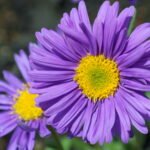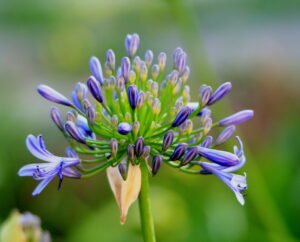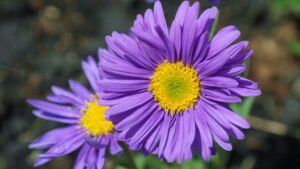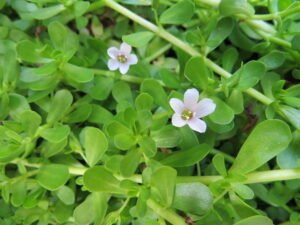How To Care For Dipladenia (Dipladenia Is Not Mandevilla)

Dipladenia is an evergreen tropical flowering plant, known for its bushy appearance and beautiful flowers. Due to its trumpet-shaped flowers, it is also known as Rocktrumpet. If given proper care, dipladenia are known to reward with stunning blooms all summer long. Though Dipladenia may look similar to Mandevilla, both are different plants.

The Dipladenia genus consists of 114 species. In this article, we will discuss in detail how to care for Dipladenia.
Dipladenia and Mandevilla: What is the Difference?
Due to the similar shape of the flowers, Dipladenia may be confused with Mandevilla, but both are different plants. While Dipladenia is bushy and shrub-like in shape, Mandevilla is a vine plant. Though both plants have similar-looking, brightly colored trumpet-shaped flowers, dipladenia flowers are smaller in size.
The shape and size of leaves are also different in both plants; while Diplandenia leaves are glossy and pointed, Mandevilla plant leaves are longer and thinner. Though there are differences in plant shape, foliage, and blooms, both Dipladenia and Mandevilla have similar care requirements.
The only major difference in plant care requirements is that mandevilla is a vine plant and requires support structures to grow, while dipladenia does not require this.
Some Interesting Facts About Dipladenia
Dipladenia is a drought-tolerant tropical plant. It can handle warm weather, and it can tolerate gusty winds. As it is a tropical plant, it does not fair well in extreme winters and needs to be moved indoors and overwintered if temperatures fall below 7 degrees C or 45 degrees F in your area, along with chances of snow and frost.
Dipladenia are plants native to the southwestern United States, Mexico, Central America, the West Indies, and South America. The Native condition is high temperatures throughout the year and a hot, humid, and rainy climate.
Dipladenia are evergreen plants, which means that they do not shed their leaves in autumns or winters.
Dipladenia plants are bushy and have a downward growth habit. Due to this, they can be grown as perfect hanging basket plants.
Dipladenia blooms in bright red, white, pink, and crimson colors. The flowers of Dipladenia are popularly known to attract pollinators like hummingbirds, bees, and butterflies to your garden.
Some Commonly Asked Questions About Dipladenia
Do Dipladenias like full sun?
As already explained, dipladenias are tropical plants, and they need at least 4-6 hours of bright direct sunlight per day to grow properly. Sunlight is essential in Dipladenia plant care, as plant bloom quality and quantity get affected if proper sunlight is not provided.
Is Dipladenia an annual or perennial?
Dipladenias are perennial plants that grow naturally in warm areas that do not experience snow and frost in winter, and where the temperature does not fall below 7 degrees C or 45 degrees F.
Is the Dipladenia plant poisonous?
Dipladenia is not considered to be a toxic plant. But Dipladenia plants have milky white sap that can cause skin irritation. Keep it out of reach of kids and pets that may accidentally ingest it.
What are some famous varieties of Dipladenia?
Some popular varieties of dipladenia are Sun Parasols®, Rio®, and Diamantina®.
Can you grow Dipladenia as a houseplant?
Yes, Dipladenia can be grown indoors as a houseplant. It can be grown inside in pots, containers, and hanging baskets, but it should be kept in that sunny part of your house that receives at least 4-6 hours of bright direct sunlight.
When is the blooming time of Dipladenia?
Dipladenia starts blooming in spring, and it keeps blooming throughout the summer until the fall season.
How to care for Dipladenia
1. Select the right location for Dipladenia.
As already explained, dipladenia thrives in full sunlight, so select an area in your garden or home that receives bright direct sunlight. Either you are planting it in a pot or directly in garden ground, ensure that the soil is well draining and there is no waterlogged situation.
2. Preparing the soil for Dipladenia.
Dipladenia grows best in the soil that is well-draining. Loamy and sandy soils are best for dipladenia. The soil pH range should be between 6.6 and 7.8. This pH range means that Dipladenia can survive in three types of acidic, neutral, and alkaline soil pH types, which is a good quality of this plant.
If you are planting Dipladenia in garden ground, prepare the soil first by removing weeds, and then amend the soil with organic compost, vermicompost, or organic manure. Dig a hole in the ground twice the width of the root ball and equal to the height of the root ball. Place the dipladenia plant in the hole and firm the soil around the root ball. Water the plant immediately after planting.
If you are planning to grow Dipladenia in a pot or hanging basket, a soil mix needs to be prepared. The best soil mix for the Dipladenia plant is 2 parts ground soil, 1 part compost/vermicompost, and 1 part sand.
3. Watering care for Dipladenia.
Though dipladenia are drought-tolerant plants, they grow best in moist soils. Though too much water and soggy soil can cause root rot in plants, So whenever you are watering Dipladenia, ensure to water deeply and thoroughly, and then wait for the soil to dry before next watering.
If your Dipladenia plant is in a pot or hanging basket, water thoroughly till water falls freely through the pot’s drainage hole, and after that, do not give the next watering until the top 2 inches of soil in the pot is dry to touch. Always remember that overwatering is harmful, and it can kill your plants.
4. Fertilizer care for Dipladenia.
Dipladenia is a flowering plant, and it needs nutrients to maintain its bloom quality and quantity. Ensure to feed slow-release and balanced fertilizer to the plant once in spring. Compost, vermicompost, or organic manure once fed in spring time will the help plant to grow healthy. This one-time fertilization in spring is enough for the entire year.
Dipladenia in a pot or hanging basket should be fed with NPK 20-10-20 liduid fertilizer once a month. Though it is important to understand that overfeeding with nitrogen-rich fertilizer will grow folliage, but blooming will be negatively affected.
5. Pruning care for Dipladenia.
Pruning and pinching are known to encourage new growth in Dipladenia plants. Pruning should be done in the late winters or early spring. It will help in maintaining the plant in it’s bushy shape and it will cause new growth to sprout out.
Deadheading, which is basically removing spent blooms from a plant, is not found helpful in Dipladenia because plants drop their dead blooms by themselves.
6. Pest and disease care for Dipladenia.
Though Dipladenia is known to be resistant to various pests, it can fall prey to aphids, spider mites, and mealybugs. As a preventive measure, you can spray organic neem oil spray mix on your plants once a month. But if the plant is already under attack and signs of damage are visible, spray the neem oil mixture every third day until the problem is completely resolved.
Root rot is a fungal disease in Dipladenia plant caused by overwatering, and soggy soil. As a preventive measure, water only as per the guidelines given above.
Tags: #Dipladenia Plant Care, #How To Care For Dipladenia, #How to Plant Dipladenia, #Dipladenia care for beginners, #Dipladenia care tips, #AmazeGarden.Com, #Plants Care Tips, #Gardening, #Kitchen Gardening, #Terrace Gardening, #Backyard gardening, #Container Gardening, #Urban Gardening, #plants Care, #Dipladenia Care, #Dipladenia Care Tips,
To Get The Latest Gardening News, Tips, and Tricks Directly in Mailbox, Subscribe to our newsletter!









